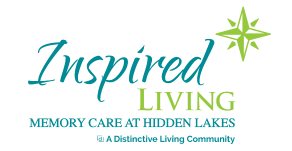Aging doesn’t have to mean slowing down, especially for your brain health. While Alzheimer’s disease is a common cause of dementia, there’s encouraging news: regular physical activity may significantly enhance brain health and reduce the risks of cognitive decline.
Staying active isn’t just about improving your mobility or heart health. It’s a commitment to keeping your mind sharp and your spirits high.
Physical activity benefits brain health, so it can be good to know effective exercises for seniors and how to integrate movement into your daily routine.
The Brain-Body Connection
Regular physical activity fuels both your body and your mind. When you move, your body increases blood flow to the brain, delivering more oxygen and nutrients. This primes the brain for better functionality, especially in areas that control memory and thinking.
Exercise also helps strengthen neuroplasticity—the brain’s ability to learn and repair—by stimulating cell growth in the brain.
Additionally, exercise reduces inflammation and combats the production of stress hormones. Reducing inflammation and stress accumulation can work as a buffer against age-related changes that may impair cognitive function.
Improving Cognitive Function Through Exercise
Wondering what regular movement can do for your brain? Here are 3 significant ways physical activity impacts cognitive health.
1. Enhances Memory & Learning
Exercise can boost the size of the hippocampus, the part of your brain tied to memory and learning, supporting the ability to recall and retain information. Trying to remember the name of your neighbor or a relative’s birthday? Staying active could make all the difference.
2. Improves Decision-Making & Problem-Solving
Regular activity contributes to improved executive functions, which include problem-solving, planning, organizing, and multitasking. These skills are essential for daily life, from remembering to pay bills on time to cooking your favorite recipe without missing a step.
3. Reduces the Risk of Dementia
Studies have shown that seniors who exercise regularly lower their chances of developing Alzheimer’s and other forms of dementia. Physical activity helps preserve brain volume, which naturally decreases with age, providing significant protection against decline.
Types of Exercises for Seniors & Their Brains
Incorporating movement into your life doesn’t mean you need intense sweat sessions.
Even a single session of moderate exercise can provide immediate benefits. An active lifestyle means including movement in your daily routine, ranging from low-impact activities to vigorous exercises.
The combination of aerobic, strength, and flexibility training forms a well-rounded routine that supports both body and brain.
1. Aerobic Exercises
Also known as cardio, aerobic exercises can get your heart pumping and blood flowing. Adults should aim for at least 150 minutes of moderate-intensity aerobic activity, which can be divided into 30 minutes a day, 5 days a week. Examples include:
- Brisk walking
- Water aerobics
- Gardening
- Tennis (doubles)
- Dancing (ballroom or social dancing)
- Cycling (slower than 10 miles per hour)

2. Strength Training
Building muscle is just as important as increasing your heart rate. Older adults should practice muscle-strengthening activities at least 20 minutes 2 days a week. Strength training exercises help improve overall independence by maintaining balance, bone density, and functionality.
Examples include:
- Using light dumbbells or resistance bands
- Body-weight exercises, like seated squats or side leg lifts
- Yoga postures
3. Flexibility & Balance
Maintaining flexibility and balance is key to preventing falls and promoting mobility.
- Yoga & Tai Chi are low-impact activities that can strengthen muscles while calming the mind
- Modified balance exercises
- Many balance exercises can also reduce stress, which can negatively impact cognitive function
Starting & Sticking to an Exercise Routine
Starting something new can feel overwhelming, but small, purposeful steps can lead to significantly positive changes. Here’s how to create a sustainable fitness routine:
- Consult your doctor
- Before beginning any new exercise program, check with your healthcare provider to verify activities are safe for your health & fitness level
- Start small & gradually increase
- Begin with shorter sessions, such as 10–15 minutes of walking, & gradually increase intensity & duration over time
- Make it enjoyable
- Choose activities that excite you, whether it’s dancing, gardening, or joining a local swimming group; enjoyment motivates you to continue long-term
- Stay social & connected
- Exercise with a friend or family member to make it a fun & fulfilling experience; social interaction is proven to boost brain health
Tackling Obstacles & Staying Motivated
It’s natural to encounter challenges along the way, but don’t let them derail your progress.
Common Barriers
Pain, fatigue, or a full schedule can make staying active a challenge. The good news is that you still benefit from a moderate or modified routine. Try choosing gentle, low-impact exercises or breaking up activities into smaller, manageable chunks throughout your day.
Stay Motivated
It’s helpful to set achievable goals (the SMART method is a good way to do this) and take time to celebrate your successes, like finishing a week of being active.
You can easily track your progress by keeping a journal, using a fitness app, or staying motivated with an exercise buddy.
Find Support
Ask friends, family, or caregivers to join you. An exercise partner can fuel your motivation and help push you on tough days so you can celebrate your achievements together.
Take the First Step Toward a Healthier Brain
Physical activity is a powerful tool for protecting your brain as you age. It can preserve memory, enhance decision-making, and reduce the risk of cognitive decline, showing how interconnected our brains and bodies are.
Don’t wait to experience the benefits. Start small today, whether that means a gentle walk around the block or trying a chair yoga session. Each step can take you closer to a healthier brain and a higher quality of life.
If you’re looking for a personalized plan for staying active and sharp as you age, the Inspired Living team is here to help. Together, we can create a tailored plan that works for your needs and goals. Call us today for advice or resources.









